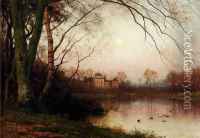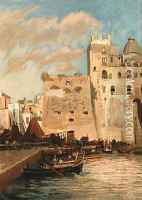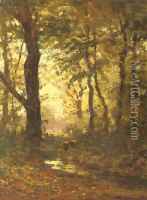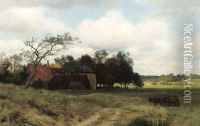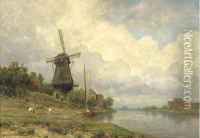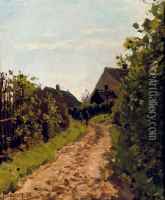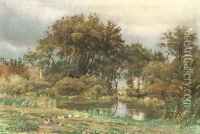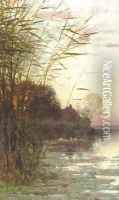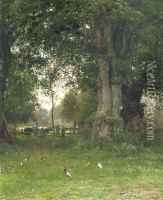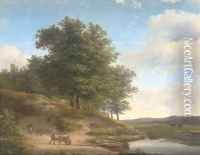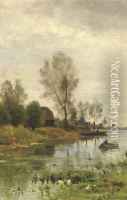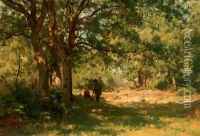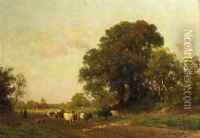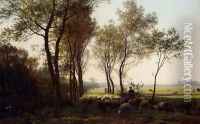Julius Jacobus Van De Sande Bakhuyzen Paintings
Julius Jacobus Van De Sande Bakhuyzen was a Dutch painter and etcher born on June 18, 1835, in The Hague, Netherlands. He hailed from an artistic family; his father was a prominent art dealer and his siblings, Gerardine and Hendrik van de Sande Bakhuyzen, were also accomplished artists. Julius was primarily known for his skilled landscape paintings and his detailed attention to the depiction of trees, skies, and water.
He received his early art education from his father and later studied at the Hague Academy of Art. Under the tutelage of Johannes Bosboom and Cornelis Kruseman, he honed his technique and developed a keen interest in the Dutch landscape, especially the areas around the Hague. Julius was influenced by the 17th-century Dutch masters, and he often painted en plein air, capturing the shifting moods of nature.
His works were characterized by a meticulous approach to realism and a subtle use of light and shade, traits that earned him a place amongst the second generation of the Hague School, a group of artists who focused on realistic depictions of the Dutch countryside. Although the Hague School is often associated with somber tones, Van De Sande Bakhuyzen's palette was noted for being comparatively brighter and more colorful.
Throughout his career, Van De Sande Bakhuyzen exhibited his works both in the Netherlands and abroad, gaining recognition and winning several awards. His paintings were well-received, and he was a member of various art societies, including Arti et Amicitiae in Amsterdam and Pulchri Studio in The Hague.
Van De Sande Bakhuyzen continued to paint into his old age, maintaining the traditional methods and styles of the Hague School even as art movements around him shifted towards modernism. He passed away on October 21, 1925, leaving behind a legacy of beautifully detailed landscapes that captured the serene essence of the Dutch countryside.
